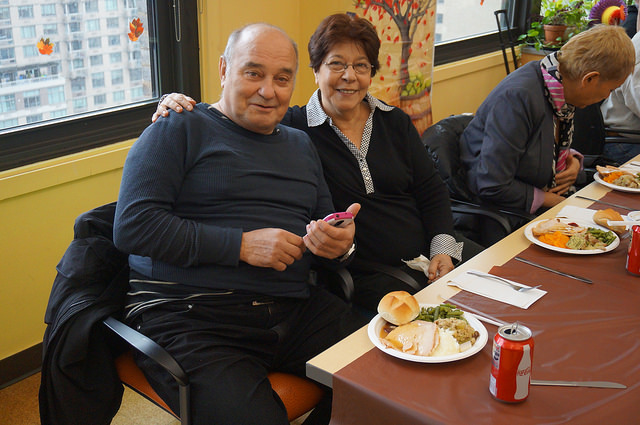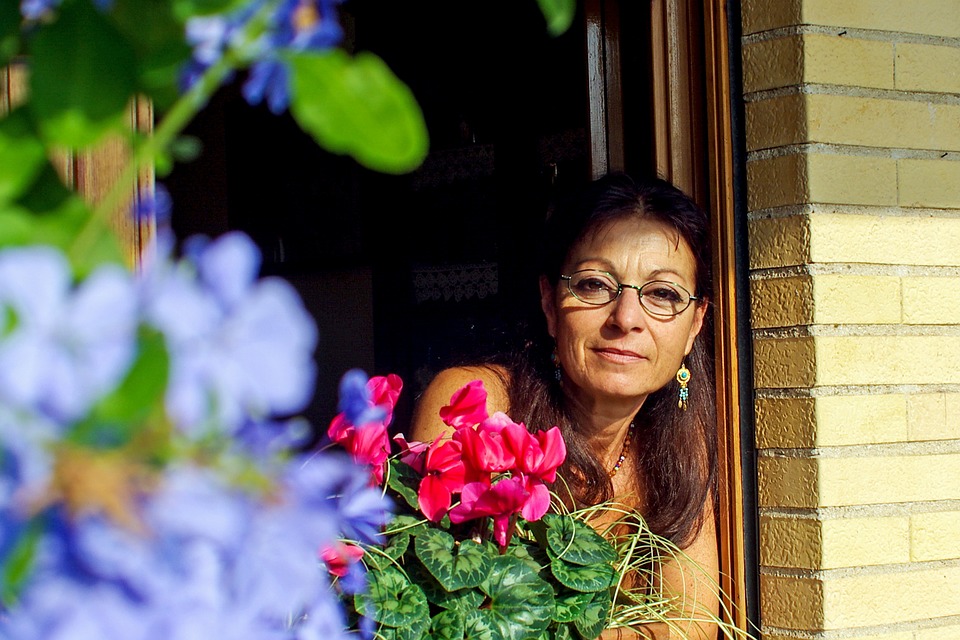by Kelly Kent, Director of the National Housing Initiative for SAGE. For more information on SAGE’s National LGBT Elder Housing Initiative, visit http://www.sageusa.org/lgbthousing/ or contact Kelly at kkent@sagusa.org.
A growing proportion of our population is reaching retirement age in the coming years. Baby boomers, those born between the years of 1946 and 1964, began turning 65 in 2011. The age group 65 and older makes up the largest age group in the US and is growing at a faster rate than any other age group. Harvard’s Joint Center for Housing Studies (JCHS) released a report in 2016, which found that “over the next twenty years, the population aged 65 and over is expected to grow from 48 million to 77 million.” This will result in one in three homes being headed by someone aged 65 or older by 2035. Even more concerning, while roughly 15 million older adults earned less than 80 percent of their area median incomes in 2015, by 2035 this group will reach 27 million. Additionally, The Homeless Research Institute of the National Alliance to End Homelessness estimated that the older adult homeless population is projected to rise from 44,000 in 2010 to as many as 95,000 by 2050.

LGBT Specifically
Currently, there are approximately 3 million LGBT older adults in the US. This number is expected to increase to 7 million in the next 25 years. In August 2016, the Williams Institute released a report that compiled research findings in this area. It found that “same-sex couples are disadvantaged in retirement assets, retirement savings, and ability to pass on wealth. Same-sex couples also have a higher rate of poverty compared to heterosexual married couples. Lesbian older couples in particular, are 10-20% less likely than different-sex couples to have retirement income or interest and dividend income, and are much more likely to receive public assistance.” These startling statistics are coupled with the pervasive housing discrimination suffered by many LGBT older adults. In one study, as many of 26% of houses tested treated same-sex couples differently by either quoting higher monthly rent or denying housing applications.
Potential Solutions/Innovations
There are a number of alternatives that communities can explore to address needs of their LGBT elders. More communities are beginning to develop resources for aging in place that benefits all older adults but more work needs to be done to provide cultural competence that respects the cultural nuances of our communities. Most communities do not presently call out diversity as a foundation of their developed communities for aging older adults. SAGE continues its work to increase its housing specific resources for communities interested in developing multi-cultural options for not only the LGBT community but also for those straight allies who embrace our community and would welcome a more diverse environment as they age.
Communities have the ability to create these types of resources for their aging older adult residents and make them a reality. Ultimately multi-family developments can be designed in a number of different ways and a community should tailor any development designed to meet the specific needs of their community. However, the general principles each of these developments share include:
- Utilizing Low Income Housing Tax Credits (LIHTC) for development, ensuring that no less than 20% of all units were accessible to those at 50% and below Area Median Income.
- Embracing special needs populations (including veterans or those with HIV/AIDS) and ensuring that the service linkages needed for any potential tenants are in place through partnerships with community agencies.
- Operating subsidies to assist in paying rents through programs such as Project Based Section 8 Housing Choice Vouchers or HOPWA (Housing Opportunities for Persons living with HIV/AIDS).
- Space co-located on site for the service needs of its tenants. This could be as basic as limited case management to more intensive service needs such as a primary healthcare clinic. Exploration of funding options such as Medicaid, Medicare, and designation as a Federally Qualified Health Center are ways to ensure at least a portion of these service costs could be covered.
- Accessibility to transportation and amenities to ensure a thriving community engagement for its tenants.
- Property management and service staff trained with the cultural competency to the needs of the LGBT community.
- Not LGBT exclusive, but rather an LGBT welcoming environment open to anyone embracing a multi-cultural community that celebrates diversity.

SAGE participants share a meal at the Midtown NYC center.
SAGE Background in Housing
In February of 2015, SAGE (Services and Advocacy for GLBT Elders) launched The National LGBT Elder Housing Initiative to address the LGBT older adult housing crisis. The path-breaking initiative was launched in response to a research report by the Equal Rights Center documenting widespread discrimination against LGBT people seeking admission to or living in senior housing. The report found that 48% of older same sex couples applying for senior housing were subjected to discrimination. The effects of this rampant discrimination are further exacerbated by the fact that LGBT older people have lower incomes and less retirement savings than older Americans in general.
The Initiative seeks to engage consumers, providers, and policymakers to increase access to and create understanding and welcoming environments in housing for LGBT older people. More specifically, it takes action by following a multi-pronged approach to create a continuum of housing resources available to LGBT older adults through the following:
- Building LGBT-affirming senior housing in select cities and providing capacity building resources to communities to replicate best practices. Building capacity of organizations across the country in developing LGBT-friendly senior developments is of paramount importance to combat the entrenched discrimination experienced by the LGBT community. To meet this need, SAGE is engaging with existing development sponsors to document lessons learned and best practices that can inform replication strategies in other parts of the country. SAGE is producing webinars on the housing development process and case studies of existing projects in various parts of the country. SAGE’s goal is to serve as a catalyst for increased development through elevating discussions nationally around this innovative approach to serving our LGBT elders. In addition, in June of 2016, SAGE announced its partnership as the service provider in the development of two LGBT age-friendly senior housing projects in the Crotona Park area (82 units) of the Bronx and Ingersoll Senior Residences (145 units) in Brooklyn. Experts estimate that there are more than 100,000 LGBT seniors living in the New York City area as well as more than 25,000 transgender or gender non-conforming individuals. Estimated completion of these developments is late spring/early summer 2019.
- Training mainstream senior housing providers in fair and welcoming treatment of LGBT older people through cultural competency training. Recognizing that we will never be able to build our way out of the surge in demographics, SAGE has developed a robust training curriculum for mainstream housing providers around LGBT cultural competency. Providers can receive certification through SAGECare trainings and ensure their staff have the tools necessary to properly serve LGBT populations in mainstream housing settings. To learn more about SAGECare trainings visit sageusa.care.
- Changing public policy to end housing discrimination against LGBT older people and expand federal support LGBT-inclusive elder housing. SAGE engages in policy work supporting LGBT elders in many distinct ways, for example, supporting the Equality Act. The Equality Act would amend the Civil Rights Act of 1964 and other key federal nondiscrimination laws to provide clear, explicit protection against discrimination based on sexual orientation and gender identity in employment, housing, credit, federally funded programs (including education), and federal jury service. It would make clear that these types of discrimination are forms of sex discrimination and unlawful. In addition, SAGE continues to defend the Equal Access Rule instituted in 2014 that prohibits any housing program receiving federal funding from discriminating based on sexual orientation or gender identity.
- Equipping LGBT older people with the resources they need to find— and advocate for—LGBT-friendly housing in all its forms. SAGE has developed “Know Your Rights” and other Fair Housing materials for LGBT older adults to educate both consumers as well as providers around the tenets of Fair Housing law and how to advocate for yourself or others. In addition, SAGE has more than 83 publications available on its website focusing on an array of topics including the cultural competency needs of LGBT older adults in housing settings, barriers to same-sex couples in housing settings, and approaches to creating more welcoming settings not only in housing but in healthcare settings and broader service programs.
- Expanding services (Aging in Place, Care Coordination, Naturally Occurring Retirement Communities, etc) that support LGBT older people who face housing challenges. SAGE is developing best practice materials on Aging in Place and Care Coordination. Not everyone prefers to move to a new community as they age and a large majority of those responding to various surveys indicate they would like to age in their existing homes and communities. In order to do so safely and ensure that you have care coordination within community to provide needed support, SAGE is actively engaged to provide resources for this segment of our population.

Our country is on the precipice of the largest growth in its aging older adult population that it has ever seen. Communities are just beginning to fully understand the implications this will place on existing housing and service resources. It is estimated that 10% of this growth will take place in the LGBT aging older adult population with more than 7 million seniors expected to age into their older adult life in the next 20 years. How our community chooses to engage at this time around the availability of appropriate housing and service options for our older adult population will determine a lot about how LGBT individuals age in community. It is clear that there are multiple ways to “age well” in community. The options may differ in their approach and cost but each provides a sense of dignity and safety for our LGBT brothers and sisters. Communities that create the largest amount of choice and a continuum of housing options will ultimately create the opportunities for its aging LGBT constituency to make that choice for themselves. And ultimately, isn’t that what we want?
The opinions expressed in this article are those of the author and do not necessarily reflect those of the Diverse Elders Coalition.

